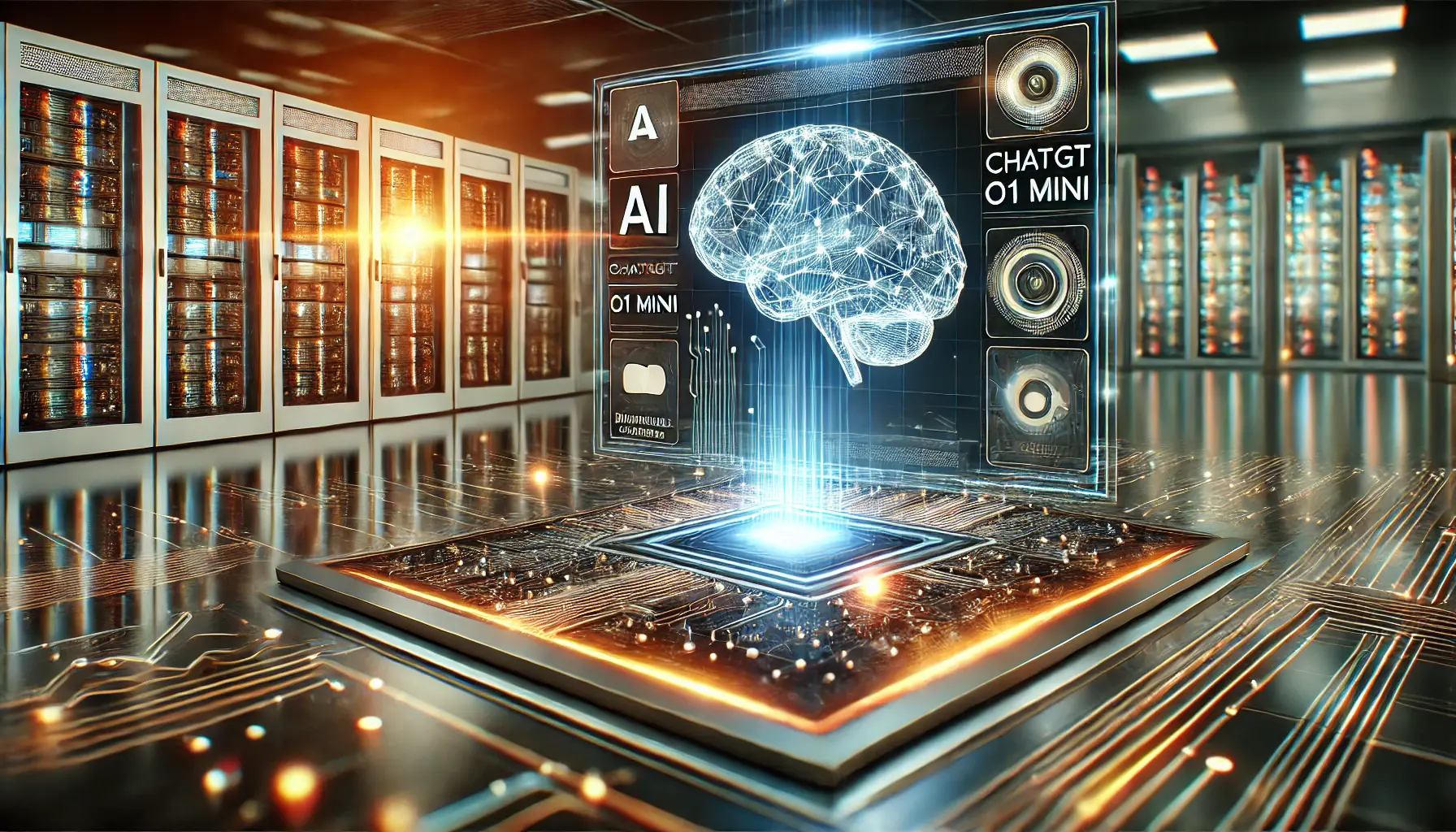The digital landscape is continuously evolving, with artificial intelligence (AI) playing a pivotal role in shaping the future of online interactions.
Among the myriad of AI technologies, Claude AI emerges as a groundbreaking tool, offering unparalleled capabilities in enhancing website functionalities.
This article delves into the integration of Claude AI into websites, a process that not only revolutionizes user experience but also opens up a realm of possibilities for website owners and developers.
Integrating Claude AI into websites is not just about embedding a piece of technology; it’s about reimagining how websites interact with their users.
Claude AI, with its advanced natural language processing and machine learning capabilities, offers a seamless and intuitive interface for users, making digital interactions more human-like and personalized.
This integration represents a significant leap towards creating more engaging, efficient, and intelligent websites that can understand and anticipate user needs in real-time.
- Understanding Claude AI and Its Capabilities
- Practical Applications of Claude AI in Websites
- Challenges and Solutions in Integrating Claude AI
- Optimizing Website Performance with Claude AI
- Future Trends in Claude AI Integration
- Best Practices for Claude AI Integration
- Measuring the Success of Claude AI Integration
- Conclusion: The Future of Websites with Claude AI Integration
- FAQs: Integrating Claude AI into Websites
Understanding Claude AI and Its Capabilities
What is Claude AI?
Claude AI, developed by Anthropic, stands at the forefront of AI technology, designed to understand and generate human-like text based on the input it receives.
Its ability to process and analyze vast amounts of data in real-time allows it to provide responses that are not only relevant but also contextually aware.
This makes Claude AI an ideal candidate for integration into websites, where it can enhance user engagement through personalized interactions.
The technology behind Claude AI is built on the latest advancements in machine learning and natural language processing.
This enables Claude AI to learn from interactions, continuously improving its responses and the quality of engagement with users.
The integration of such a dynamic tool into websites opens up new avenues for delivering content, providing customer support, and facilitating user interactions in a way that was previously unimaginable.
Enhancing User Experience with Claude AI
One of the primary benefits of integrating Claude AI into websites is the significant enhancement of user experience.
By understanding and responding to user queries in a conversational manner, Claude AI can make websites more interactive and responsive.
Whether it’s through providing instant answers to customer inquiries, offering personalized recommendations, or supporting users through complex processes, Claude AI can transform the way users interact with websites.
Moreover, Claude AI’s ability to understand context and nuance in language allows for a more natural and engaging conversation with users.
This level of interaction ensures that users feel heard and understood, leading to increased satisfaction and loyalty.
The integration of Claude AI into websites thus not only improves the functionality of the site but also strengthens the relationship between the website and its users.
Integrating Claude AI into your website can significantly enhance user experience by providing personalized and contextually aware interactions.
Practical Applications of Claude AI in Websites
The integration of Claude AI into websites transcends basic chat functionalities, paving the way for a myriad of practical applications that can revolutionize how businesses interact with their customers online.
From personalized content delivery to automated customer support, Claude AI’s versatility allows it to adapt to various website needs, enhancing both the user experience and the website’s operational efficiency.
Personalized Content Delivery
One of the standout features of Claude AI is its ability to deliver personalized content to users.
By analyzing user behavior and preferences, Claude AI can tailor the website content to match individual user needs, making each interaction unique and relevant.
This level of personalization not only improves user engagement but also increases the likelihood of conversion.
- Dynamic content suggestions based on user interests.
- Personalized product recommendations in e-commerce sites.
- Customized news feeds or articles that cater to the user’s preferences.
Automated Customer Support
Customer support is another area where Claude AI can significantly impact.
By integrating Claude AI into customer service portals, websites can provide 24/7 support without the need for human intervention.
This not only reduces operational costs but also ensures that customers receive immediate assistance, regardless of the time of day.
- Instant responses to frequently asked questions (FAQs).
- Guided troubleshooting for common issues.
- Booking and reservation assistance without waiting times.
Enhanced User Interactions
Beyond content delivery and customer support, Claude AI can enhance overall user interactions on a website.
From simplifying navigation to offering interactive tutorials, Claude AI can make a website more accessible and user-friendly, particularly for new visitors.
- Interactive guides for website navigation and product discovery.
- Language translation services to cater to a global audience.
- Feedback collection and analysis for continuous improvement.
Incorporating Claude AI into your website can transform it into a dynamic platform that not only understands but also anticipates and responds to user needs in real-time.
Challenges and Solutions in Integrating Claude AI
While the integration of Claude AI into websites offers numerous benefits, it also presents certain challenges that developers and website owners must navigate.
These challenges range from technical hurdles to ethical considerations, each requiring careful thought and strategic planning to overcome.
However, with the right approach, these challenges can be transformed into opportunities for innovation and improvement.
Technical Integration and Compatibility
One of the primary challenges in integrating Claude AI into websites is ensuring technical compatibility and seamless integration with existing systems.
This often involves complex backend development and the need to adapt web architectures to support AI functionalities without compromising website performance.
- Utilizing API bridges and middleware to facilitate communication between Claude AI and website backends.
- Conducting thorough testing to ensure compatibility and performance standards are met.
- Optimizing website infrastructure to support AI-driven features without affecting load times.
Data Privacy and Security
Another significant challenge is ensuring data privacy and security, especially given the sensitive nature of the data that Claude AI might process.
Adhering to data protection regulations and maintaining user trust is paramount.
- Implementing robust encryption and data protection measures to secure user data.
- Ensuring compliance with GDPR and other relevant data protection laws.
- Transparently communicating with users about how their data is used and processed.
User Acceptance and Experience
Ensuring user acceptance of AI-driven interactions and maintaining a positive user experience can also be challenging.
Users may have reservations about interacting with AI, and there may be concerns about the AI’s ability to understand and respond accurately to diverse user queries.
- Designing intuitive AI interaction interfaces that feel natural and easy to use.
- Continuously improving AI responses through machine learning and user feedback.
- Providing options for human intervention in cases where the AI fails to meet user expectations.
Addressing the challenges of integrating Claude AI into websites requires a balanced approach, focusing on technical excellence, data privacy, and user-centric design.
Optimizing Website Performance with Claude AI
Integrating Claude AI into a website brings not only advanced functionalities but also the need for optimization to ensure that the website’s performance remains high.
Performance optimization is crucial for maintaining fast load times, ensuring smooth interactions, and providing a seamless user experience, even with the added complexity of AI features.
Minimizing Load Times
One of the key considerations when integrating Claude AI is the impact on website load times.
AI functionalities, especially those requiring real-time data processing, can potentially slow down a website.
To mitigate this, developers can employ several strategies to keep the website running smoothly.
- Lazy loading AI-driven features only when needed to reduce initial load times.
- Using asynchronous loading for AI scripts to prevent blocking the main thread.
- Optimizing AI model sizes and leveraging edge computing to bring processing closer to the user.
Ensuring Smooth Interactions
Smooth and responsive interactions are essential for a positive user experience, especially when AI elements like chatbots or personalized content recommendations are involved.
Ensuring that these features respond quickly and accurately requires careful optimization.
- Implementing caching strategies for frequently requested AI-generated content.
- Utilizing web workers for background AI processing to keep the user interface responsive.
- Regularly updating AI models to improve efficiency and reduce response times.
Maintaining Scalability
As a website grows, its AI features must be able to scale accordingly without degrading performance.
Scalability involves planning for increased traffic and data processing needs, ensuring that Claude AI can continue to deliver personalized experiences without hiccups.
- Designing a scalable architecture that can handle growth in user numbers and data volume.
- Employing cloud services with auto-scaling capabilities to adjust resources based on demand.
- Monitoring performance metrics and conducting load testing to anticipate and address scalability issues.
Effective optimization strategies are essential for integrating Claude AI into websites, ensuring that performance is maintained without compromising on the advanced capabilities that AI offers.
Future Trends in Claude AI Integration
The integration of Claude AI into websites is not just a current trend but a glimpse into the future of digital interactions.
As technology evolves, so too will the ways in which Claude AI can be utilized to enhance website functionality and user experience.
Exploring future trends in Claude AI integration offers insights into the potential transformations in how we interact with digital platforms.
Advanced Personalization Techniques
The future of Claude AI integration lies in the development of even more sophisticated personalization techniques.
These advancements will enable websites to offer highly individualized user experiences, far beyond what is currently possible.
By leveraging deeper insights into user behavior and preferences, Claude AI will be able to curate content, products, and services with unprecedented accuracy.
- Dynamic adjustment of website layouts and interfaces to suit individual user preferences.
- Real-time content generation based on current user interactions and historical data.
- Enhanced predictive analytics for anticipating user needs and offering solutions proactively.
Seamless Multimodal Interactions
Another significant trend is the shift towards seamless multimodal interactions, where Claude AI will facilitate a blend of text, voice, and visual inputs and outputs.
This will make website interactions more natural and intuitive, closely mimicking human-to-human communication.
Users will be able to switch between modes of interaction based on their current context or preference, enhancing accessibility and convenience.
- Integration of voice commands and responses for hands-free navigation and interaction.
- Use of augmented reality (AR) and virtual reality (VR) to provide immersive experiences directly from the website.
- Adaptive interfaces that adjust based on the user’s preferred mode of interaction.
AI-Driven Security Enhancements
As websites become more intelligent with Claude AI, so too will their ability to ensure user security.
Future integrations will likely include advanced AI-driven security measures that can predict and neutralize threats in real-time.
This proactive approach to security will not only protect user data but also ensure that the website remains a trusted platform for users.
- Automated detection and mitigation of security threats using AI algorithms.
- Real-time monitoring of user behavior to identify and prevent fraudulent activities.
- Enhanced encryption and data protection techniques powered by AI.
The future of Claude AI integration into websites promises a revolution in personalization, multimodal interactions, and security, setting the stage for a new era of digital experience.
Best Practices for Claude AI Integration
Successfully integrating Claude AI into websites requires adherence to a set of best practices.
These guidelines ensure that the integration is not only technically sound but also aligns with user expectations and business objectives.
By following these best practices, developers and website owners can maximize the benefits of Claude AI, enhancing user experience and operational efficiency.
Focus on User-Centric Design
At the heart of Claude AI integration should be a focus on user-centric design.
This means prioritizing the needs and preferences of the user at every stage of the integration process.
By doing so, websites can ensure that AI-driven features add real value to the user experience, making interactions more engaging and intuitive.
- Conduct user research to understand the needs and preferences of your target audience.
- Design AI interactions that are natural and easy to navigate.
- Regularly collect and analyze user feedback to refine and improve AI features.
Ensure Transparency and Trust
Transparency in how Claude AI is used and how data is processed is crucial for building trust with users.
Websites should clearly communicate the role of AI on the platform and how it enhances the user experience.
Additionally, being transparent about data usage and protection practices is essential for maintaining user trust and compliance with data protection regulations.
- Provide clear information about the use of AI and data processing practices on your website.
- Implement clear opt-in mechanisms for data collection and use.
- Adhere to data protection laws and best practices to safeguard user information.
Continuous Improvement and Adaptation
The field of AI is rapidly evolving, and so are user expectations.
To keep pace, websites integrating Claude AI should commit to continuous improvement and adaptation.
This involves regularly updating AI models, incorporating new AI technologies, and adapting to changing user behaviors and preferences.
- Stay informed about the latest developments in AI and machine learning.
- Regularly update AI models to improve accuracy and efficiency.
- Adapt AI features based on user feedback and changing trends.
Adhering to best practices in Claude AI integration ensures a successful and sustainable implementation, fostering a positive and productive relationship between users and AI-driven websites.
Measuring the Success of Claude AI Integration
Evaluating the impact of integrating Claude AI into websites is crucial for understanding its effectiveness and identifying areas for improvement.
Success measurement involves analyzing various metrics related to user engagement, satisfaction, and operational efficiency.
By closely monitoring these indicators, website owners and developers can make informed decisions to enhance the AI integration process further.
User Engagement Metrics
User engagement is a key indicator of the success of Claude AI integration.
Metrics such as time spent on the site, interaction rates with AI features, and the frequency of return visits can provide insights into how effectively the AI is engaging users.
An increase in these metrics typically signifies that the AI integration is adding value to the user experience.
- Track page views and time spent on pages with AI features.
- Analyze interaction rates with AI-driven tools like chatbots or personalized recommendations.
- Monitor return visit rates to gauge long-term engagement.
Customer Satisfaction and Feedback
Customer satisfaction is another critical measure of success.
Direct feedback from users about their experiences with AI features can offer valuable insights into what is working well and what needs improvement.
Surveys, feedback forms, and social media comments are useful tools for collecting this information.
- Conduct surveys to gather user opinions on AI-driven features.
- Collect and analyze feedback from various channels, including social media and customer support inquiries.
- Use sentiment analysis tools to gauge the overall sentiment towards AI features on your website.
Operational Efficiency Metrics
Beyond user-focused metrics, the success of Claude AI integration can also be measured by improvements in operational efficiency.
This includes reductions in customer support response times, increased content personalization efficiency, and overall cost savings.
These metrics can indicate how well the AI is supporting business objectives.
- Measure reductions in response times for customer inquiries handled by AI.
- Analyze the efficiency of content personalization and its impact on conversion rates.
- Calculate cost savings resulting from automated AI-driven processes.
Measuring the success of Claude AI integration is a multifaceted process that involves analyzing user engagement, satisfaction, and operational efficiency metrics to ensure the AI is meeting its intended goals.
Conclusion: The Future of Websites with Claude AI Integration
The journey of integrating Claude AI into websites is an evolving narrative of innovation, challenges, and immense potential.
As we have explored, Claude AI stands as a beacon of advancement in the realm of artificial intelligence, offering a plethora of opportunities for enhancing user experience, operational efficiency, and overall website performance.
The integration of such technology into websites marks a significant leap towards creating more intelligent, responsive, and personalized digital spaces.
Revolutionizing User Experience
The integration of Claude AI into websites has set a new standard for user experience.
By offering personalized content, seamless customer support, and interactive user interfaces, Claude AI has enabled websites to engage with their audience in a more meaningful and efficient manner.
The future promises even more sophisticated personalization and interaction models, making websites not just a source of information but a dynamic platform for user engagement.
Overcoming Integration Challenges
Despite the promising benefits, the integration of Claude AI into websites comes with its set of challenges.
Technical complexities, data privacy concerns, and the need for continuous improvement are just a few hurdles that developers face.
However, with strategic planning, adherence to best practices, and a focus on user-centric design, these challenges can be effectively managed, paving the way for successful Claude AI integration.
Measuring Success and Looking Ahead
Measuring the success of Claude AI integration is crucial for understanding its impact and identifying areas for enhancement.
Through a combination of user engagement metrics, customer feedback, and operational efficiency indicators, website owners can gauge the effectiveness of their AI initiatives.
As technology advances, so too will the metrics and methods for evaluating AI integration, ensuring that websites remain at the forefront of digital innovation.
- The continuous evolution of Claude AI technology promises even more advanced capabilities for websites.
- Adapting to and overcoming the challenges of AI integration will remain a key focus for developers.
- Success measurement will play a crucial role in refining and enhancing AI integration strategies.
In conclusion, the integration of Claude AI into websites represents a transformative shift in how we conceive and interact with digital platforms.
As we move forward, the potential for Claude AI to revolutionize website design, functionality, and user engagement is boundless.
With a commitment to innovation, user-centric design, and continuous improvement, the future of websites integrated with Claude AI is not just promising; it’s a gateway to a new era of digital excellence.
FAQs: Integrating Claude AI into Websites
Explore common questions about integrating Claude AI into websites, providing insights into its capabilities, applications, and benefits.
Yes, Claude AI can analyze user behavior and preferences to offer highly personalized content and product recommendations on websites.
Absolutely. Claude AI utilizes machine learning to continuously improve its responses and interactions based on user feedback and interactions.
Yes, Claude AI can process and analyze complex queries, providing users with solutions and support for a wide range of issues.
Claude AI enhances user engagement by offering interactive and personalized experiences, making websites more responsive and intuitive.
Challenges include ensuring data privacy, maintaining website performance, and achieving seamless integration with existing systems.
Optimizing website performance involves using asynchronous loading, caching strategies, and minimizing AI model sizes for efficient processing.
Future trends include more advanced personalization, seamless multimodal interactions, and enhanced AI-driven security measures on websites.
Success is measured by analyzing user engagement metrics, customer satisfaction feedback, and improvements in operational efficiency.














